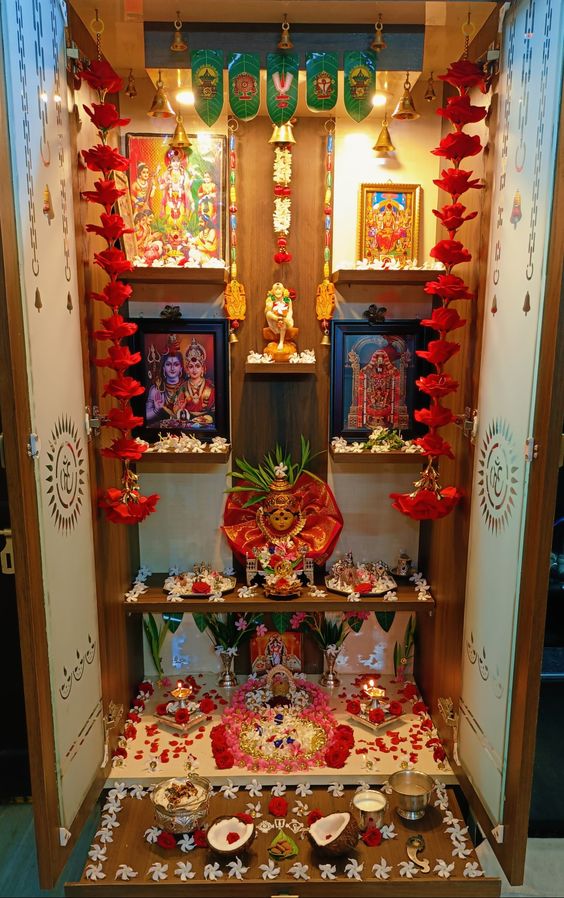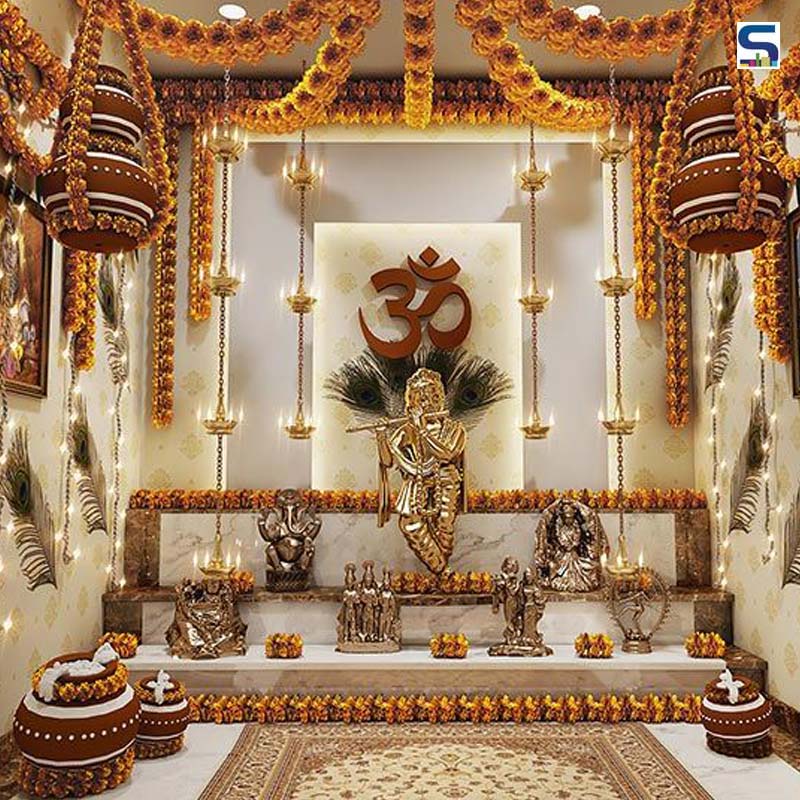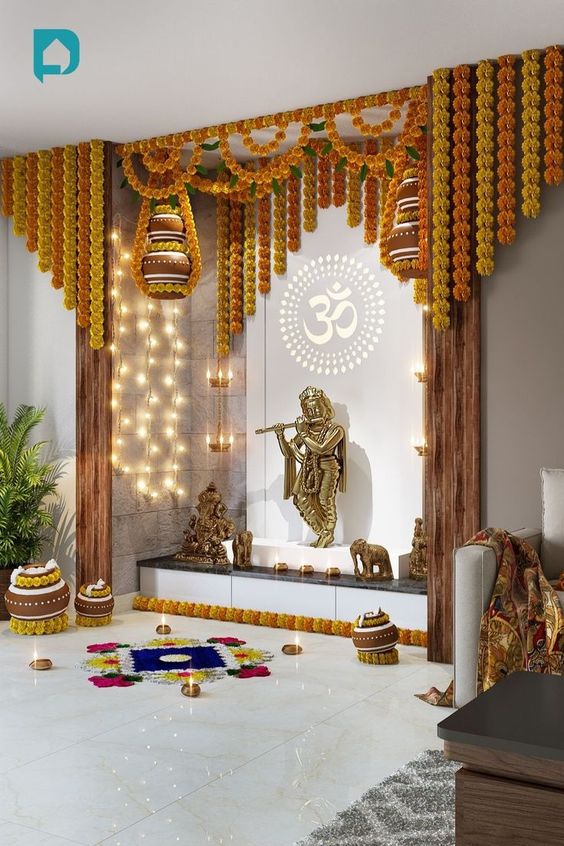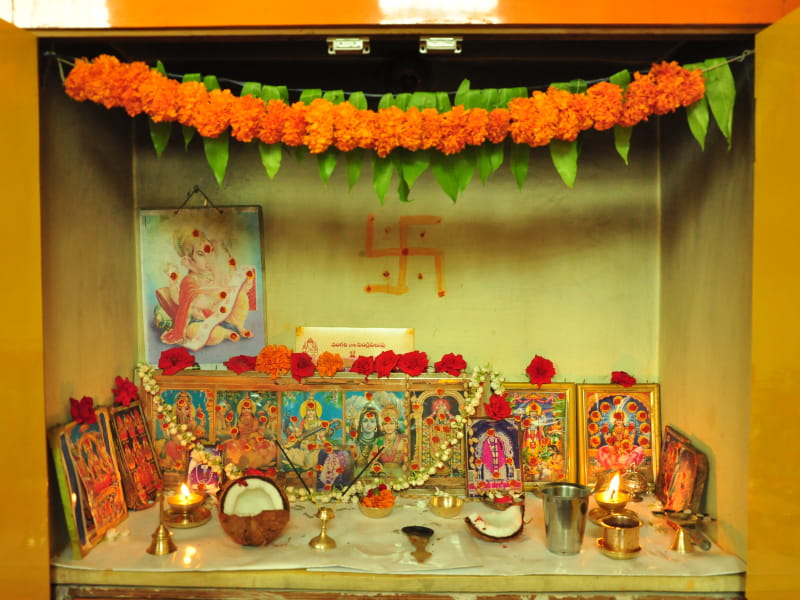Creating a puja room is not just about arranging idols and setting up a prayer area; it’s about establishing a sacred space that resonates with peace, devotion, and spirituality. In this comprehensive guide, we will explore effective puja room decoration ideas, personal insights, and practical tips to help you craft a serene environment for worship.
Why a Dedicated Puja Room is Important
Having a dedicated space for prayer and meditation is essential in many cultures. It allows individuals to connect with their faith and practice spirituality. Here’s why a puja room should be an integral part of your home:
- Spiritual Connection: A puja room creates a spiritual sanctuary where you can connect with the divine.
- Focus and Concentration: A separate area minimizes distractions, helping you concentrate during prayers.
- Personal Space: It becomes a personal space for meditation and reflection.
- Cultural Significance: For many, a puja room is a reflection of cultural heritage and tradition.
Planning Your Puja Room Decoration
Choosing the Right Location
The location of your puja room is crucial for creating a harmonious environment. Ideally, it should be:
- A quiet corner of your home.
- A place with ample natural light.
- A room that is easily accessible but also maintains privacy.

Deciding the Size and Layout
Consider the space available and the number of people using the room. A large family may need a bigger area compared to a single individual. Below is a layout comparison:
| Size | Ideal Layout | Pros | Cons |
|---|---|---|---|
| Small (1-2 persons) | Compact altar with minimal decor | Easier to maintain; cozy atmosphere | Limited space for items |
| Medium (3-5 persons) | Shared altar with additional seating | Suitable for family gatherings; comfortable | More decor needed; maintenance increases |
| Large (5+ persons) | Spacious altar with multiple seating arrangements | Accommodates larger rituals; social space | Higher upkeep; requires more planning |

Essential Elements for Your Puja Room
Choosing the Right Altar or Mandir
The altar or mandir is the focal point of your puja room. Here are some factors to consider:
- Material: Wood, metal, or marble – choose according to your preference and budget.
- Size: Ensure the altar is proportionate to your room.
- Design: Traditional, modern, or a blend of both – pick a design that resonates with you.

Popular Altar Designs
Here’s a quick comparison of popular altar designs:
| Design | Description | Suitable For |
|---|---|---|
| Traditional Wooden Altar | Intricate carvings and traditional motifs | Classic décor lovers |
| Modern Minimalist Altar | Sleek lines, minimal decor | Contemporary homes |
| Wall-mounted Mandir | Space-saving design | Small apartments |

Choosing Idols and Images
Selecting the right idols or images of deities is essential for your puja room. Here’s how to choose:
- Use materials like brass, silver, or clay.
- Ensure the size is appropriate for the altar.
- Opt for deities that resonate with your spiritual practice.
Lighting and Ambiance
Lighting plays a vital role in creating an inviting atmosphere. Consider these tips:
- Use soft, warm lighting to create a calming environment.
- Incorporate diyas or candles for traditional appeal.
- Consider natural light; placing the altar near windows can enhance positivity.

Decorative Elements
Decorative elements can add to the charm of your puja room. Here are some ideas:
- Rangoli: A colorful rangoli at the entrance can welcome positive energy.
- Garlands: Fresh or artificial flowers can adorn the altar.
- Tapestries: Beautiful wall hangings can enhance the visual appeal.
Personalizing Your Puja Room
Personal touches can make the puja room truly yours. Here are ways to infuse your personality:

Incorporating Family Traditions
Include items that hold sentimental value, such as:
- Family heirlooms
- Incorporation of family deities
- Photos of loved ones who have passed on
Selecting Colors and Themes
Choosing the right colors contributes significantly to the room’s energy. Popular choices include:
- White: Purity and peace
- Yellow: Happiness and positivity
- Red: Energy and passion

Creating an Inviting Atmosphere
To make your puja room inviting:
- Maintain cleanliness.
- Use soothing fragrances like incense or essential oils.
- Keep the space decluttered to promote tranquility.
Examples of Well-Decorated Puja Rooms
Here are some inspiring examples of beautifully decorated puja rooms:
Modern Minimalist Puja Room
A modern minimalist puja room focuses on simplicity and functionality. The use of neutral colors and sleek furniture creates a serene atmosphere.
Traditional Indian Style Puja Room
A traditional Indian puja room often features ornate woodwork, vibrant colors, and elaborate decor that reflects rich cultural heritage.
Maintaining Your Puja Room
Keeping the puja room in order enhances your connection with the divine. Here are some maintenance tips:
Daily Practices
- Regularly clean the altar and surrounding areas.
- Change flowers and refresh offerings daily.
- Dust idols and images to maintain cleanliness.
Weekly and Monthly Maintenance
- Deep clean the entire room weekly.
- Reorganize decor and items as needed.
- Check for any signs of wear and tear on the altar or decor.
Pros and Cons of Having a Dedicated Puja Room
While a dedicated puja room offers many benefits, it’s not without challenges. Here’s a look at the pros and cons:
| Pros | Cons |
|---|---|
| Promotes daily spiritual practice | Requires time and effort for maintenance |
| Creates a peaceful sanctuary | Cost of decor and materials |
| Encourages family bonding through rituals | Space constraints in smaller homes |
FAQs about Puja Room Decoration
1. What are the essential items needed in a puja room?
Essential items include an altar, idols or pictures of deities, a prayer mat, incense sticks, and a diya (oil lamp).
2. How often should I clean my puja room?
Ideally, the puja room should be cleaned daily. A deep clean should be performed weekly to maintain the sanctity of the space.
3. Can I use artificial flowers in my puja room?
Yes, artificial flowers can be used, but it’s better to have a mix of fresh flowers to keep the atmosphere vibrant and lively.
4. What colors are best for a puja room?
Colors like white, yellow, and red are often associated with positivity and spirituality, making them suitable for a puja room.
5. Is it necessary to have a separate puja room?
While it’s not mandatory, having a dedicated puja room enhances your spiritual practice and creates a sacred space for meditation and prayer.
Conclusion
Decorating your puja room is a deeply personal journey. It’s about creating a space that resonates with your spirituality and reflects your cultural heritage. Whether you choose a minimalist approach or a traditional setup, the key is to make it inviting and sacred. I hope this comprehensive guide helps you in crafting a puja room that feels like a serene sanctuary for your worship and meditation.